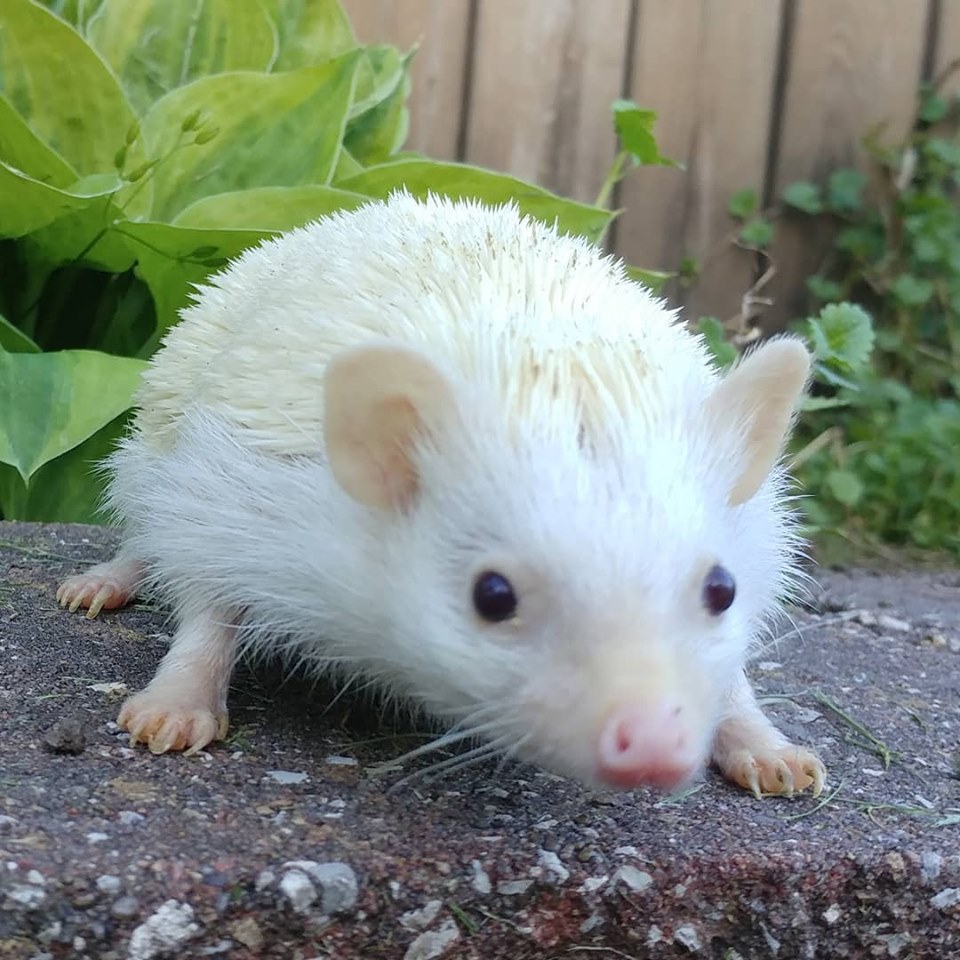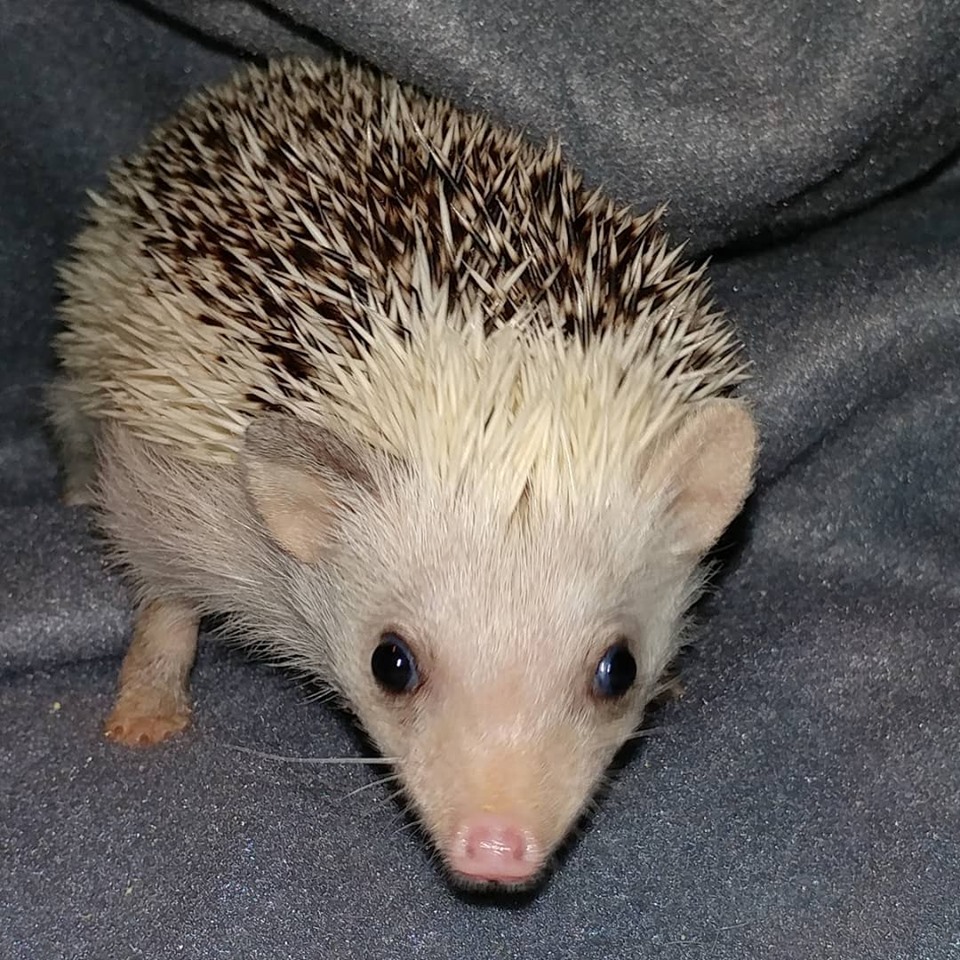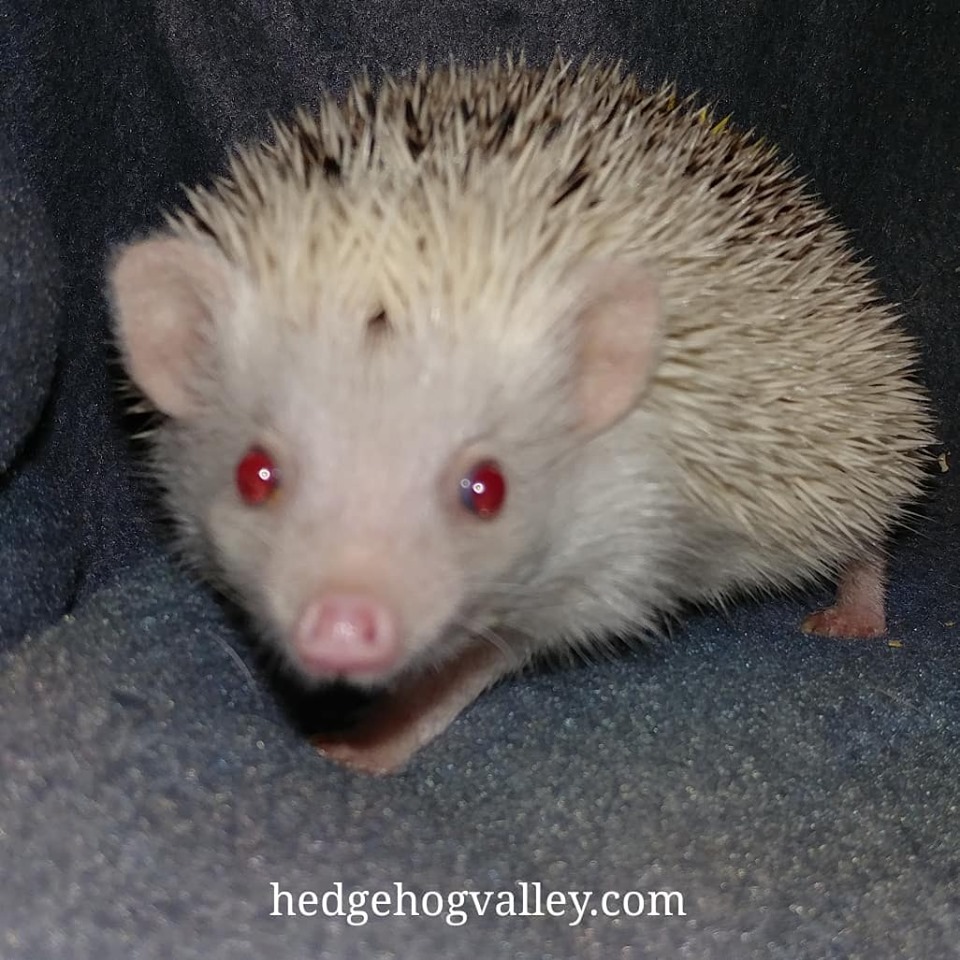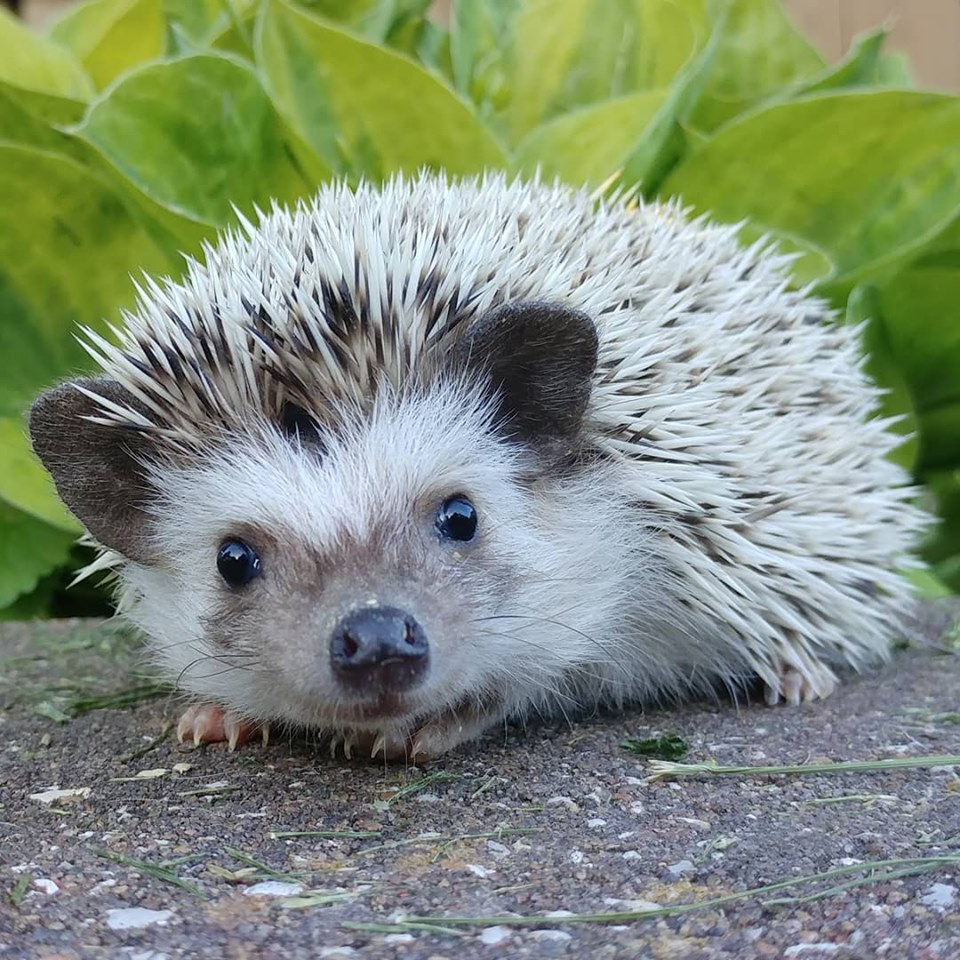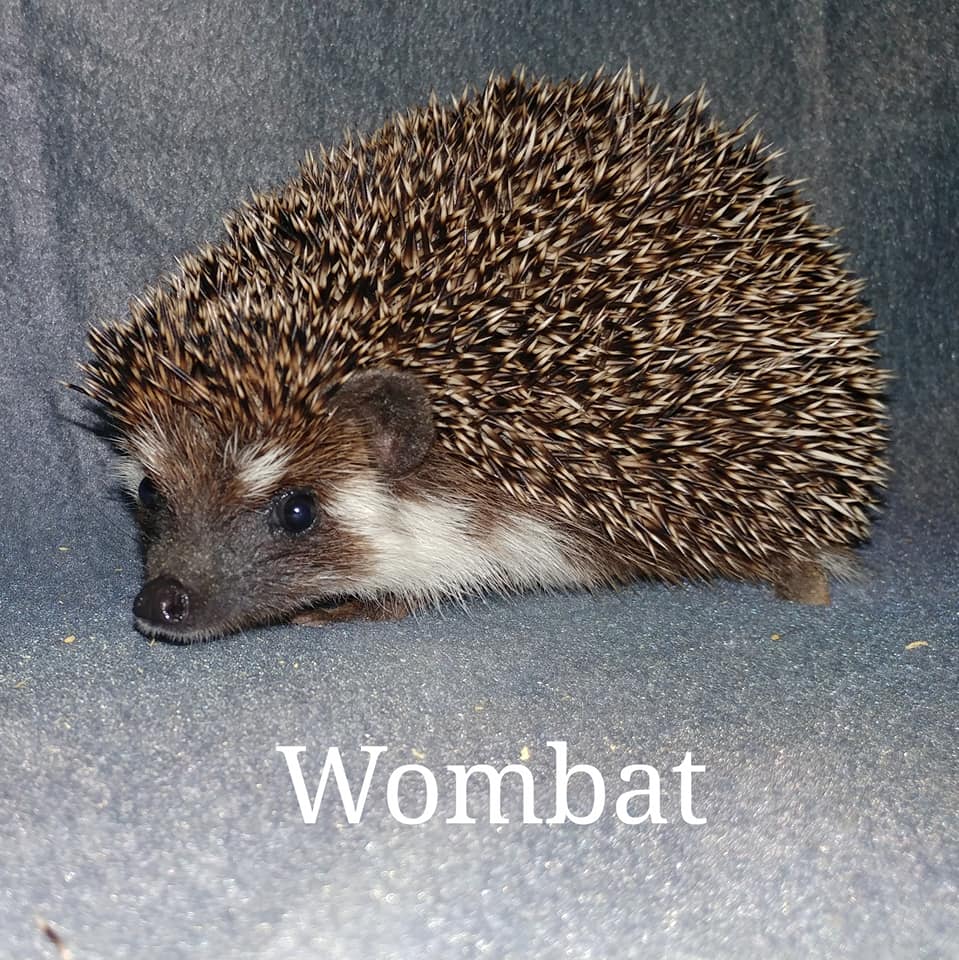|
The
Basics
Articles on basic care and considerations for new or prospective owners. Articles pertaining to health, nutrition, and veterinary care. Articles and pictures about hedgehog breeding, growth, and development. Articles for people who already own a hedgehog or want to know more than just the basics. Learn more about hedgehog colors! Wondering where to buy a hedgehog? Start here! Where to purchase hedgehog supplies and collectibles. Meet the hedgehogs of Hedgehog Valley! Meet the other critters that call or have called Hedgehog Valley their home! new!! Hedgehog Valley News Visit our blog to see what's up at Hedgehog Valley
|
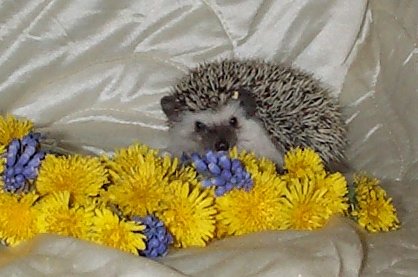
Hedgehog Color Guide This color guide is a work in progress as it has become clear over the years that the color system that I learned early in my days as a hedgehog judge is not valid. The original system was based on the assumption that the reason for some of the variation is that our pet hedgehogs are a hybrid of the white bellied and Algerian hedgehog species. It sounded like a good idea at the time, after all, there were no photos available of Algerian hedgehogs to compare. Now, new information is available and if you look here and here, you can clearly see the that there is no way that the high pigment colors previously referred to as Algerian are a characteristic of Algerian hedgehogs having hybrid with the white bellied hedgehogs. However, at the time of this writing, pretty much nothing is known about the actual genetics behind hedgehog colors. The information that I bring to this page is based on my personal observations from raising more than 30 generations of hedgehogs, as well as input from other breeders with similar experience. Before tackling the topic of colors, it seems appropriate to talk about patterns. There are a number of definite patterns that can be clearly observed and reproduced. The comments below are based on my observations and experiences and may or may not agree with what others have observed.
Now that we come to the topic of color, remember that we have no actual genetic information, just observations. In the original color system training I received, there was a distinction made between what was assumed to be "white bellied genes" and "Algerian genes." Hedgehogs do demonstrate consistent patterns of high pigment/low pigment traits that hang together and are transmitted to the offspring, but we know now that it isn't due to hybridization. We also know that there can be high pigment and low pigment siblings in the same litter. Looking to other species (cats, horses, pigeons, hamsters), there are explanations for these patterns that do not require any theories about hybridization. It appears that in some species, the default pattern is low pigment and that if a modifying gene is present at a certain locus (place on a gene), it creates the darker pattern. In other species, the default is the high pigment and the presence of the modifying gene at a certain locus mutes the color. We don't know the genetic code so we can not assume which state (low pigment/high pigment) is the default and what is due to the modifier. It does seem fair to describe these differences and to be able to refer to colors as the high pigment or low pigment variations of a color. Understanding that this is a term of convenience for now, to provide a common vocabulary for describing hedgehogs, the chart below demonstrates characteristics that would differentiate high pigment and low pigment variations of color. These categories are not absolutely clear cut, so you may have a hedgehog that isn't a perfect example, but I think you'll find that most lean clearly one direction or the other.
I cringe at using photos to show these differences because there is so much that gets washed out in the lighting, as well as the different ways that computer screens can distort colors. However, it's the best we have and will give you pointers of things to look for when you have actual hegehogs in your hands! Tamris and Pazia, below, are hedgehogs that would be considered "cinnacot" with quill bands that are brown fading to orange. Without natural lighting in the photos, it is hard to see the orange. Ulu and Wombat, below, are both chocolates with very deep brown banding. You can see that Wombat has a slightly more reddish sheen to his quills and fur than Ulu.
Hedgehog colors seem confusing because we were all taught Mendel's punnet squares to figure out what colors should be produced when you put two and two together, but mammals are not as simple as Mendel's peas. This example from dog colors helps to illustrate how much more complicated it can be. Observation over time supports the theory that there are several basic genes that control hedgehog colors. Using the already established names, these would be black, cinnamon, and apricot. There are blends of these colors that result in what has been called grey, chocolate, cinnacot, champagne, an so on. Using the traditional color chart, it can be very difficult to match hedgehogs to the exact color name. For example, most people can not tell the difference between an apricot and a champagne, or a brown, cinnamon, and dark cinnacot. I have had the experience of sitting at a table with at least four trained judges who can not agree on some of these fine discriminations. With this being the case, how useful are the color charts? If you look at hedgehog color charts that are attempting to be comprehensive, you will see quite a bit of overlap and confusion. For charts that do seem to neatly show categories that seem clearly identifiable, you will find in real life a whole lot of hedgies that can't be cleanly classified like the ones in the chart. Some show hedgehogs that look identical but label them differently. I am not saying that all the old color charts should be thrown out, just that we need to look at color with an open mind and try not to make it overcomplicated. At this point, a color chart is useful if it can be used consistently and reliably by most people to identify hedgehog colors minimal training required. The chart that I am posting below is a suggestion of how color can be viewed as a spectrum, to allow communication about colors by identifying where a color falls along that spectrum, rather than having to be so specific that it doesn't work. So, how does this work differently? Simplification. If almost no one can tell the difference between a pale apricot and a champagne, why not simplify by collapsing the categories to where they can be easily recognized as being in that range? Using the chart, you should be able to place almost every hedgehog in the correct category with only minimal training. Chart for low pigment:
Chart For High Pigment
----------------------------------------------------------------- Antigone Means Iola, KS All information on this web site is copyright of Hedgehog Valley. You may view/print the web pages for your personal use. You may also provide a link to these pages without prior approval. No one is allowed to re-post the information from Hedgehog Valley® Web Site, including pictures, to any other web site, without the approval of Hedgehog Valley. Copyright 2002
|


